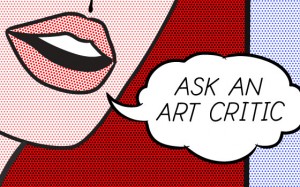It was a cold, Wednesday night in New York City, and I was an hour late for an art opening. Finally, I met up with my friend who was patiently waiting for me at a hotel on the upper west side holding a small exhibition for a local artist. After walking around, starring and pointing out pieces we liked, I decided to engage in the common dialogue when I usually attend exhibitions. And this is how the conversation started:
Me: I’m not really drawn towards to abstract art. What do you think about the artwork?
Friend: (long pause) How do you critique art? Do you look at the skill or craftsmanship? Who decides what is art and what isn’t?
I sat there for a few minutes dumbfounded, asking myself the same questions.
It was such a simple question-how do you critique art? Being an art critic I should have a straightforward list of how to analyze art for outsiders. I was at a lost of words. My response, “I suppose you do, but whenever I look at art I search for the message or meaning within it. Just say what you like and don’t like about the artworks-color, composition, anything.”
From there opinions started pouring out. It sparked dialogue. Aroused the imagination. But the last question asked “who decides what is or is not considered art” is one that I’ve been fighting to answer. Sure there are different factors–culture, social movements, gender and political issues, etc.–that steer what fills the blank walls of large museum institutions, but there are so many artists and limited white space. I have spoke with, interviewed and seen hundreds of noteworthy visual artists whose art could upstage many artworks seen in acclaimed institutions. To answer the hovering question, this the vague hierarchy of what is placed in museums:
Who hand selects the artists of tomorrow? The curator.
Who determines the fame of the artist? Art critics.
Who keeps the artist and artwork in demand and alive? We do. Everyone plays a role in catapulting or creating visibility with the arts for artists.
Our feedback and interpretations of art is vital. (No, I did not share this lucid hierarchy of with my friend as this epiphany just came along.) It’s the artwork that speaks the loudest, making you stop and stare. Or one explicit or offensive painting that somehow you keep returning to it in conversation because of its conflicting content (my personal love/hate relationship is with Jim Nutt). Whatever message the art or artist is trying to relay, it is up to us–the viewers, the art connoisseurs, outsiders, students, whomever–to connect and decipher art.
-Heather Liggins

